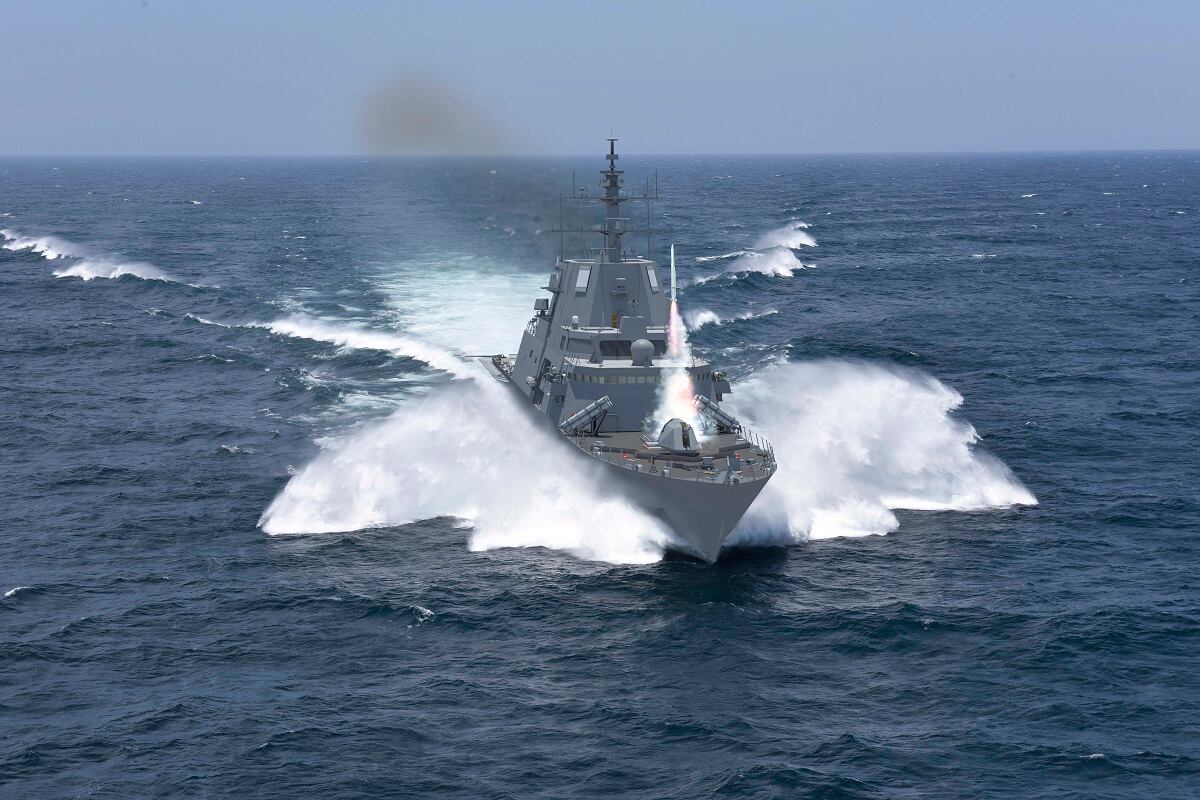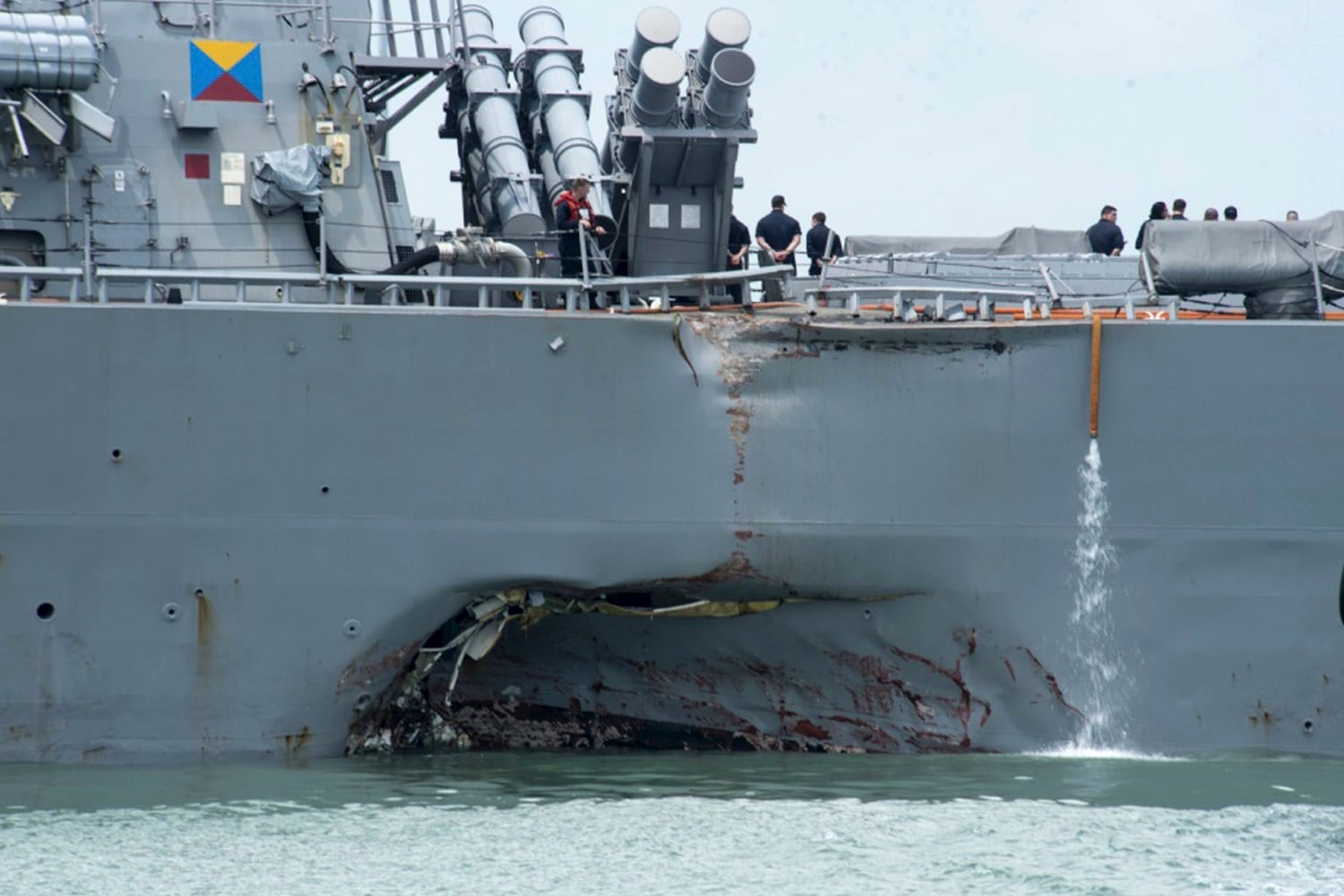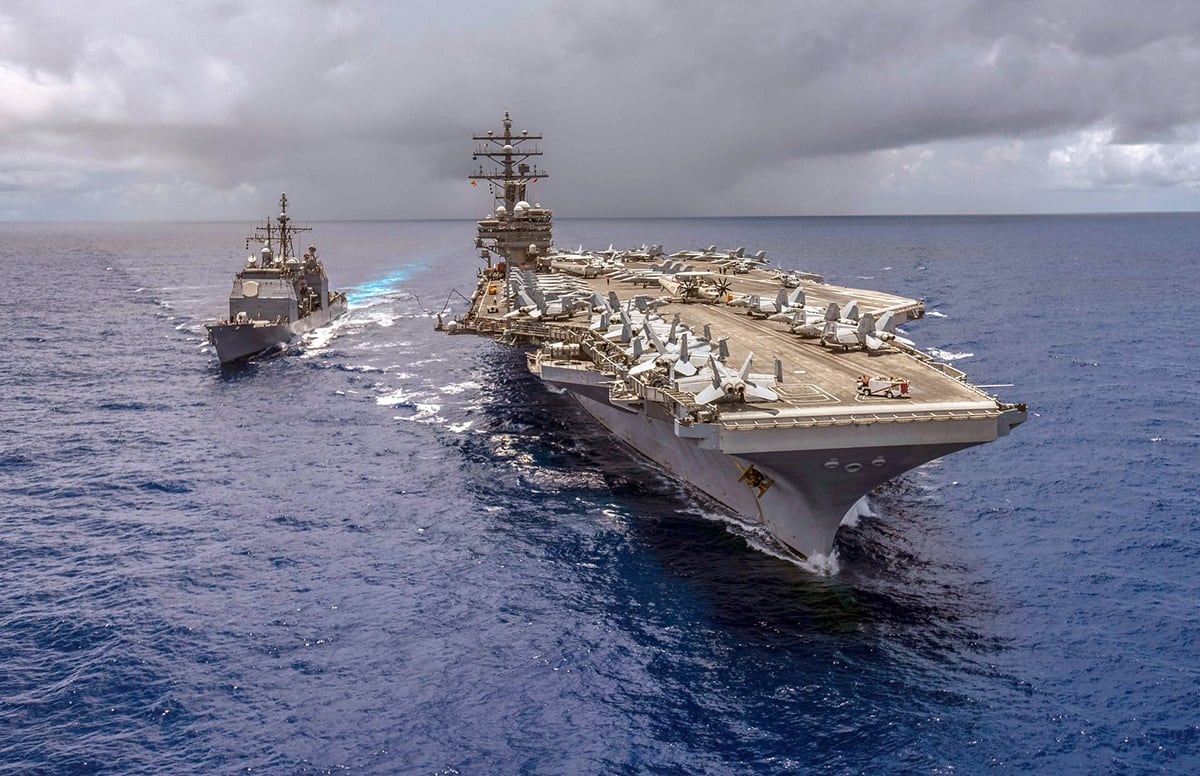WASHINGTON — The U.S. Navy is looking to get a lot of underway time out of its new frigate and is eyeing a crewing model that swaps out teams of sailors to maximize the operational time for each hull.
The so-called blue-gold crewing model effectively creates two crews for each ship of the class. The blue crew and gold crew switch out to keep the ships at sea for as long as possible without breaking the sailors and their families.
It’s the model the Navy has used for years on the ballistic missile submarines and is employing on the littoral combat ships, but now the model is likely to extend to the LCS successor, said Rear Adm. Ron Boxall, the Chief of Naval Operations’ surface warfare director.
“We’re looking at the blue-gold construct on FFG(X). We’re planning on it, which gives us a larger operational availability – it should double it,” Boxall told Defense News in an interview late last year.
RELATED

The use of blue-gold crewing hints at how the Navy is viewing its new frigate: as a ship that can carry out a a broad range of tasks that have consumed the operational time of larger combatants. That includes exercises with allies and freedom of navigation operations to counter-piracy and routine presence missions that don’t require an Arleigh Burke destroyer to be successful but are time-intensive. The Navy has bemoaned the lack of a small surface combatant that can hold down low-end missions but still contribute in a high-end fight, which has been the impetus behind the whole FFG(X) program.
Even though the crews will catch a break in the blue-gold construct, off-hull crews won’t be kicking back during their shore rotation, Boxall said. The surface force has been investing in higher-end training facilities in fleet concentration areas in an effort to increase the proficiency of its watch teams.
Crews on shore will be going through those trainers, he said.
“So, these ships are going to be out there half the time while the [off-hull] crews are back training in higher-fidelity training environments,” Boxall explained. “And what [commanding officers] will tell you is that as we get to higher and higher fidelity training, time to train becomes equally as valuable.
“So, in an increasingly complex environment, it’s just intuitive that that you have to have time to train. We think Blue-Gold makes sense for those reasons on the frigate.”
Lessons from LCS
Getting more simulator time for surface sailors has been an initiative championed by the Navy’s top surface warfare officer Vice Adm. Rich Brown. It’s an off-shoot from lessons-learned from FFG(X)’s predecessor, the LCS, which has extremely high-fidelity simulator trainers for its crews before they take over their assigned hulls.
One thing the surface force has been intrigued to see has been the high quality of the officers that come up through the LCS program, something the Navy in part attributes to the trainers, Boxall said, and the SWOs want to replicate that for the FFG(X).
“One really interesting side-note with LCS has been the quality of the training,” Boxall said. “As we went back and looked at the lessons learned from McCain and Fitzgerald, we're trying to apply some of the good things about LCS to that.
“Those officers, because they are smaller ships they get a lot more water under the keel. And they're faster ships so they are getting that water under the keel in a faster-moving environment. So we're creating a generation of officers who are getting tougher navigation environments thrown at them more quickly, and we're also getting the quality and fidelity of their trainers.”
RELATED

This has meant that LCS officers more-than stack up to their peers from larger, more advanced ships, he added.
“What we're seeing is they are doing very, very well against their contemporaries coming off the bigger ships,” Boxall said. “Why is that happening? It's fairly logical: More stick time, better fidelity trainers and more time in the trainers.”
Ownership
The littoral combat ship adopted the Blue-Gold crewing model after a series of high-profile breakdowns, some caused by crew errors. The original model was to have three crews for two hulls, a rotational model that the Navy worried was taking away from the sense of ownership for a single, specific hull that permanently attached crews might have to a greater degree.
The program was reorganized to a Blue-Gold model, which required hundreds of new billets for the LCS program, under then-head of Naval Surface Forces Pacific, Rear Adm. Thomas Rowden. Expanding Blue-Gold to the FFG(X) would further spread the model inside the surface warfare community.
Both minesweepers and patrol craft, two other workhorse platforms in the surface community, operate under a Blue-Gold crewing model as well.
However, it may not be a model that the Navy will pursue on the large surface combatant now in development. That ship may be better with a lower operational tempo, Boxall said.
“We’ll look and see if that makes sense on the large surface combatant or not,” he said. “Maybe those are better ships to keep as a surge force, maybe they’re fine operating on a lower rotational model.”
RELATED

David B. Larter was the naval warfare reporter for Defense News.








